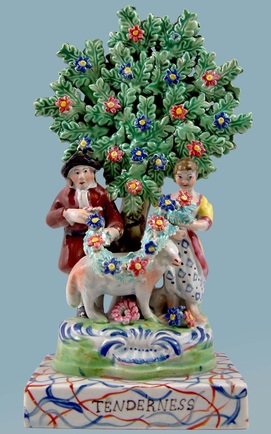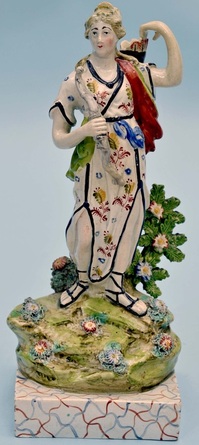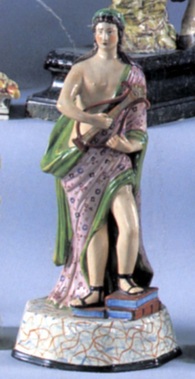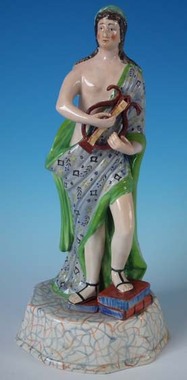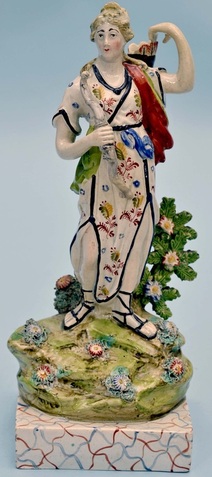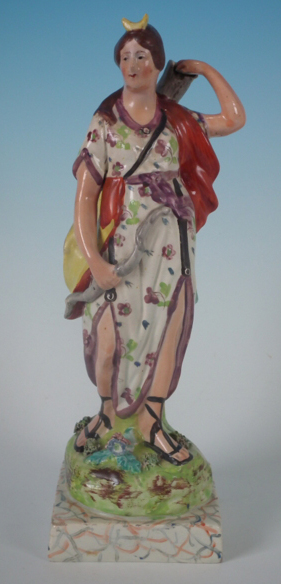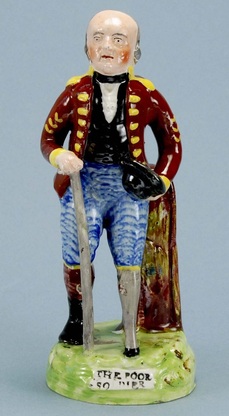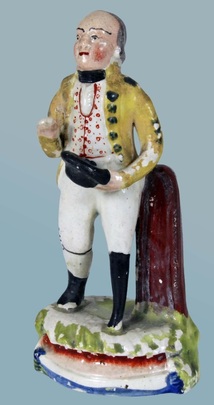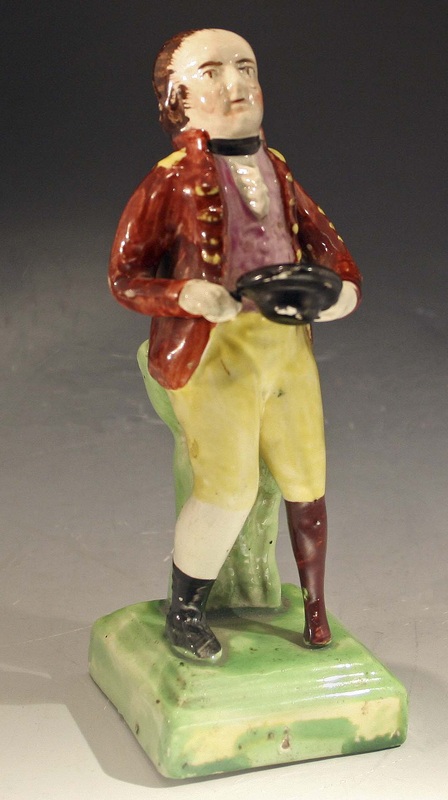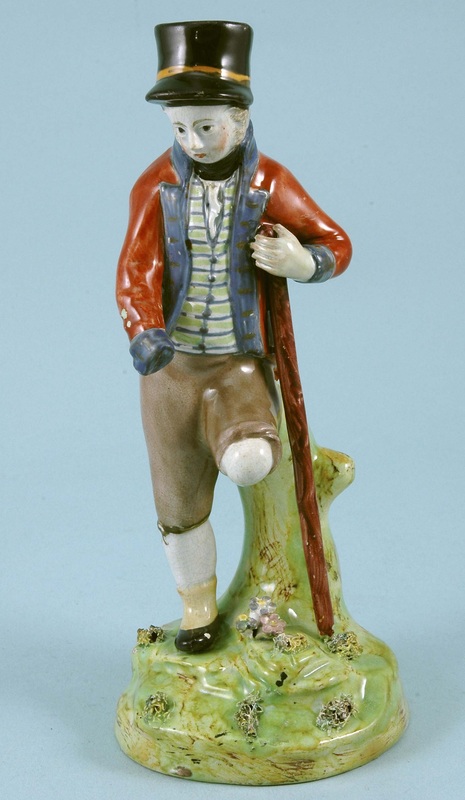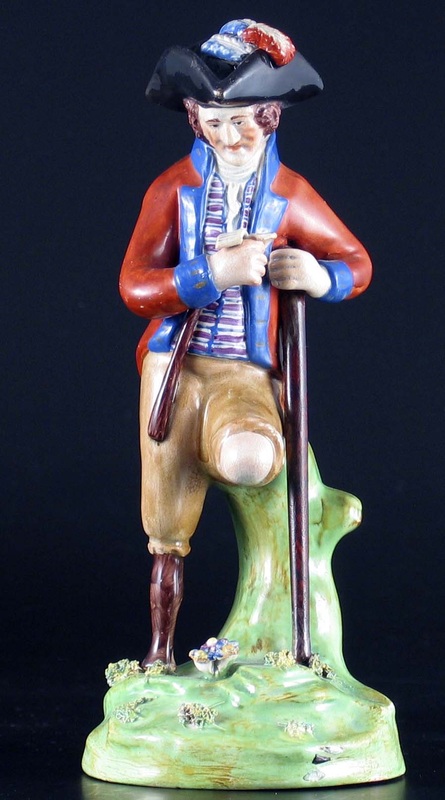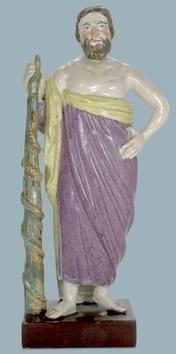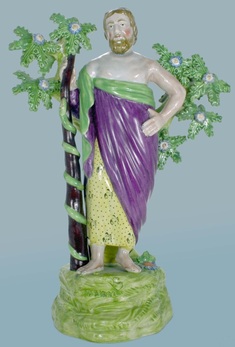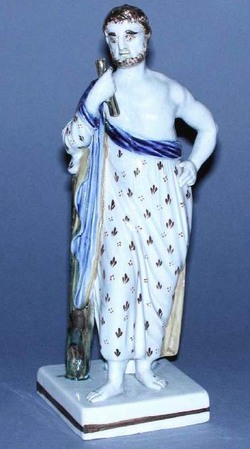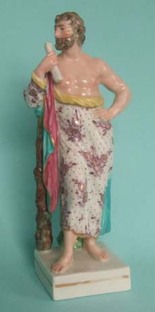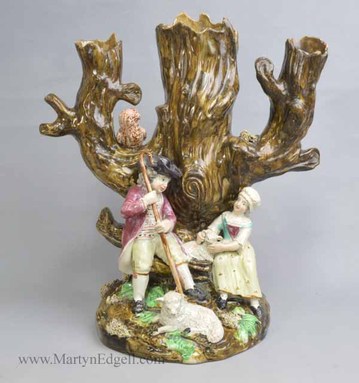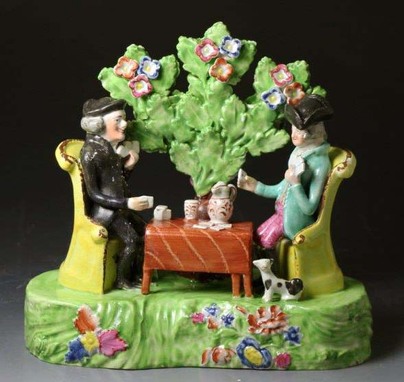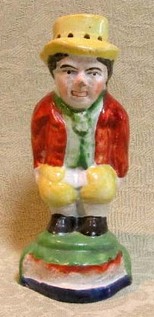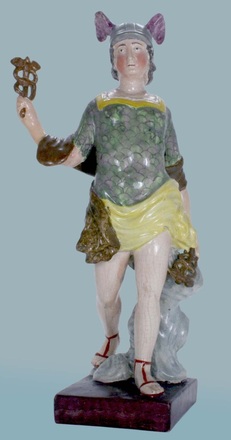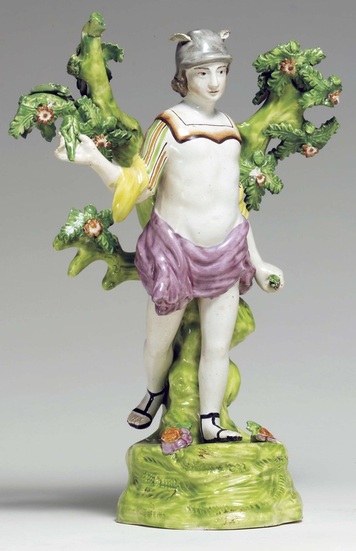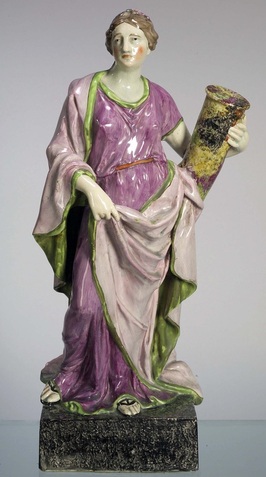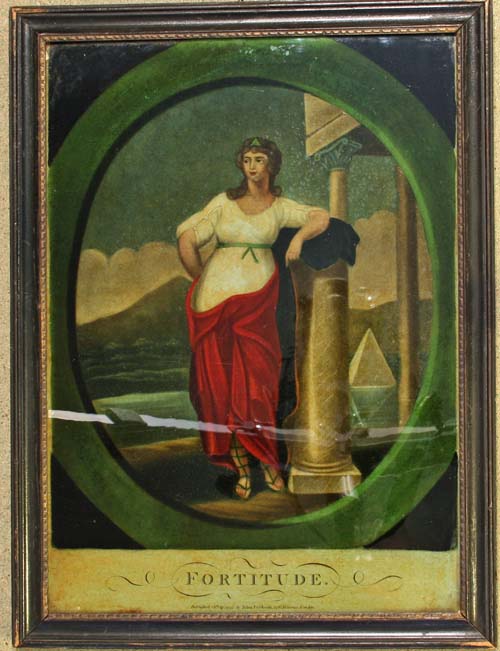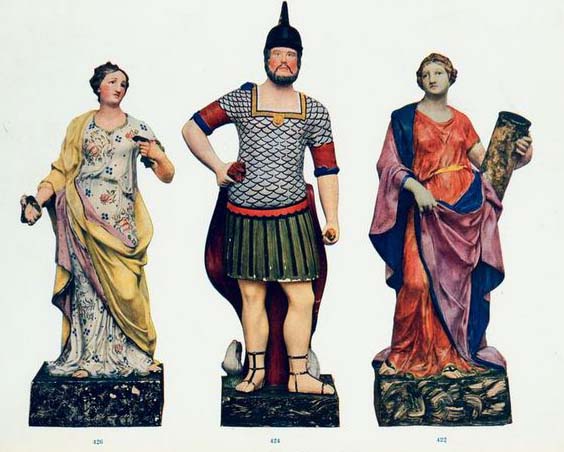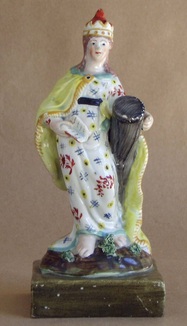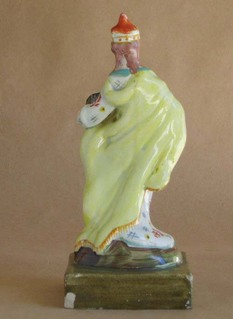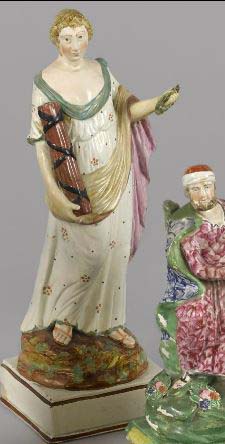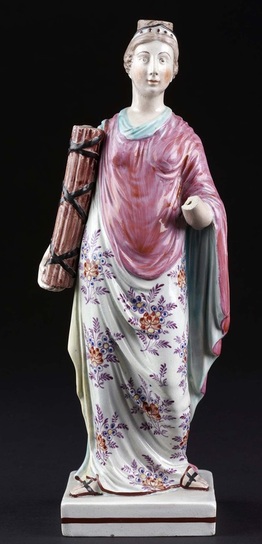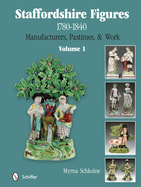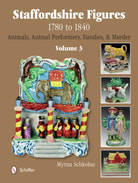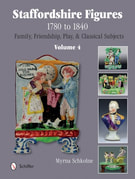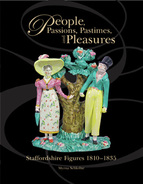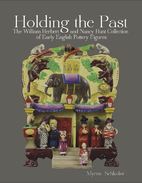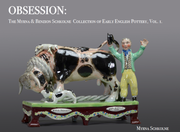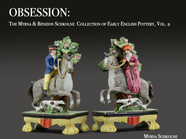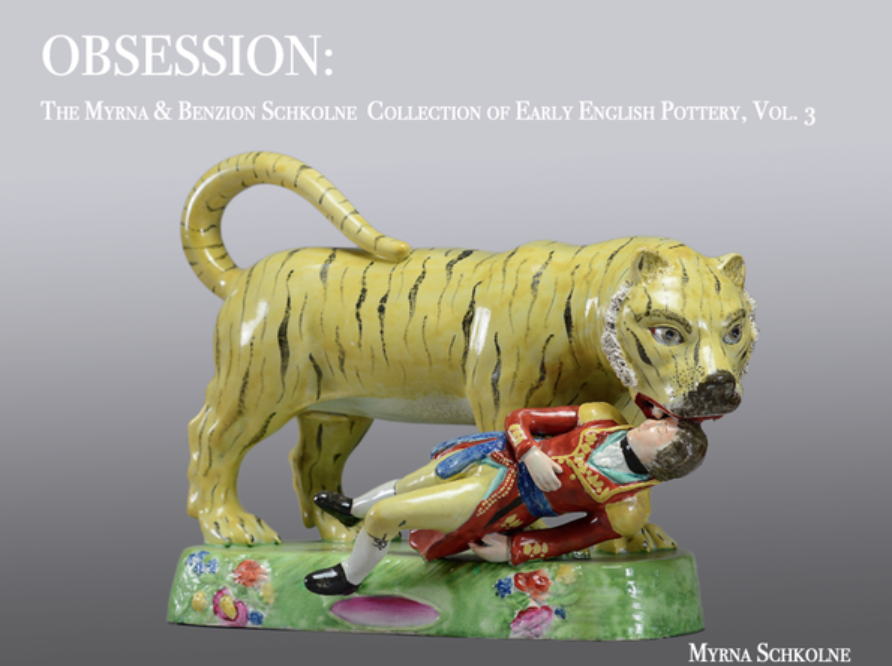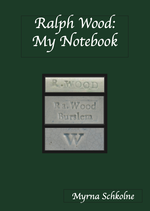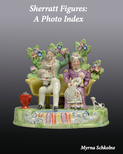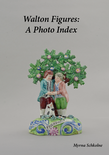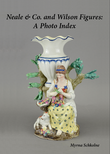Case in point are figures on vermicular bases--those pretty bases with their red and blue worm-like squiggles. On the whole, figures on vermicular bases are of superior quality and are prettily painted. But are they all Walton or even all from the same pot bank? Definitely not. Many, many years ago, I acquired the TENDERNESS below on a vermicular base. My young daughter asked me if it was brand new because it was as good as the day it was made. The colors are not unlike those Walton used, so the challenged among us might want to attribute this figure group to Walton. Don’t do that! There is not a single feature that supports a Walton attribution. (Note that Walton figures are never titled in this way. Also, this three-leaflet bocage frond is not found on a single one of the 80-plus marked Walton figure models.)
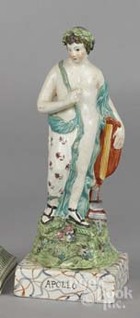
The figure of APOLLO alongside is in a lot of figures coming up at Pook and Pook shortly I haven't recorded Apollo on a vermicular base hitherto, so I was pleased to see this figure--and it is titled in the same manner as TENDERNESS at the top of this blog posting.
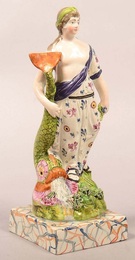
This very pretty Venus is another figure on a vermicular base that I hadn't seen until it came up at auction earlier this month. The variety of early figures never ceases to amaze me.
Walton made Diana
- on a vermicular base with bocage
- on a vermicular base without bocage
- on a brown base.
- the only classical figure marked Walton
- the only marked Walton figure found on a vermicular base
- the only marked Walton figure found on a brown base
- one of very, very, few Walton figures found without a bocage
The Walton mark is integral to the molds used to make figures. If you line up several of the same Walton figure models, you will see that the mark is identically placed on each one. In other words, the mark was not slapped on afterwards--and it was next to impossible to omit the mark.
Because WALTON is integral to the mold, you would expect to see it on all Walton toby jugs. If it was on the mold, there was no forgeting it!
And on a last note, I have posted some updates to the BELIEVE IT? page, which you can access by clicking here or from the drop-down FIGURES tab at the top of this page
